This post may contain affiliate links. Please read our disclosure policy.
Sensoji Temple is Tokyo’s oldest Buddhist temple and one of its most iconic landmarks. Located in Asakusa, it’s a place where tradition and modern-day Tokyo meet.
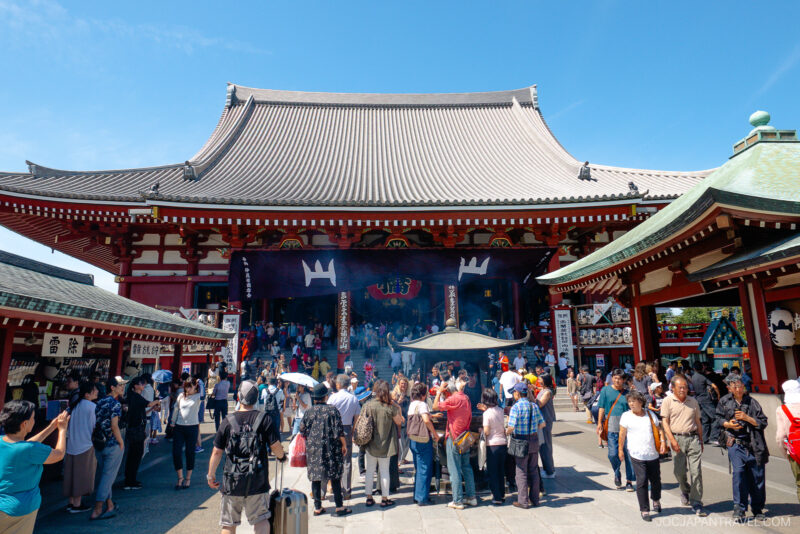
We’ve been lucky enough to visit Sensoji Temple many times, and whenever friends come to Tokyo for the first time, it’s always one of our top recommendations. In this post, we’ll share what makes Sensoji special, from its 1,400-year-old history to hands-on rituals and hidden details you won’t want to miss.
Walking Through History at Sensoji Temple
The moment you get close to Sensoji, you can feel the deep history all around you. This isn’t just a tourist spot, but a sacred place that’s been part of Tokyo’s story for centuries.
The Legend of the Kannon Statue
Sensoji’s story begins all the way back in the year 628. According to legend, two fisherman brothers discovered a golden statue of Kannon, the Buddhist goddess of mercy, while casting their nets in the Sumida River. Every time they tried to put the statue back in the water, it mysteriously returned to them.
Recognizing its spiritual importance, the village chief enshrined the statue, and in 645 AD, Sensoji Temple was born. To this day, the statue is said to remain inside the temple—though it’s never shown to the public.
Passing Through Kaminari Mon
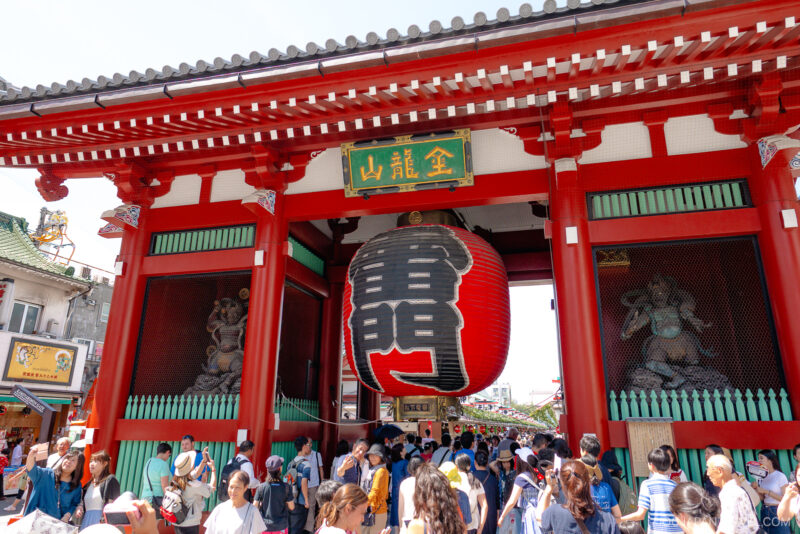
Before you even reach the temple, you’ll walk through the iconic Kaminari Mon gate, famous for its massive red lantern. Just beyond that is Nakamise-dori, a bustling street lined with charming stalls selling souvenirs, snacks, and traditional treats.
Then you’ll arrive at the impressive Hozomon Gate, a bold two-story red gate that guards the temple grounds. Right nearby, you’ll see a large bronze incense burner called a jokoro. Visitors gather here to wave the fragrant smoke over themselves for healing and good luck. If you’re visiting with little ones, try to stand upwind so the smoke doesn’t bother their eyes.
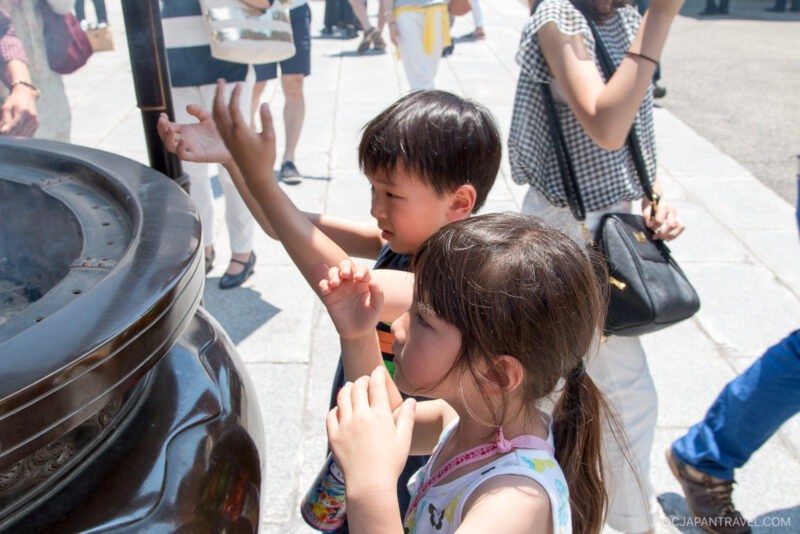
Don’t Miss These Essential Rituals
When you visit a Japanese temple or shrine, don’t just admire the architecture and surroundings; we encourage you to take part in the local prayer rituals instead.
Temizu – Purifying at the Water Pavilion
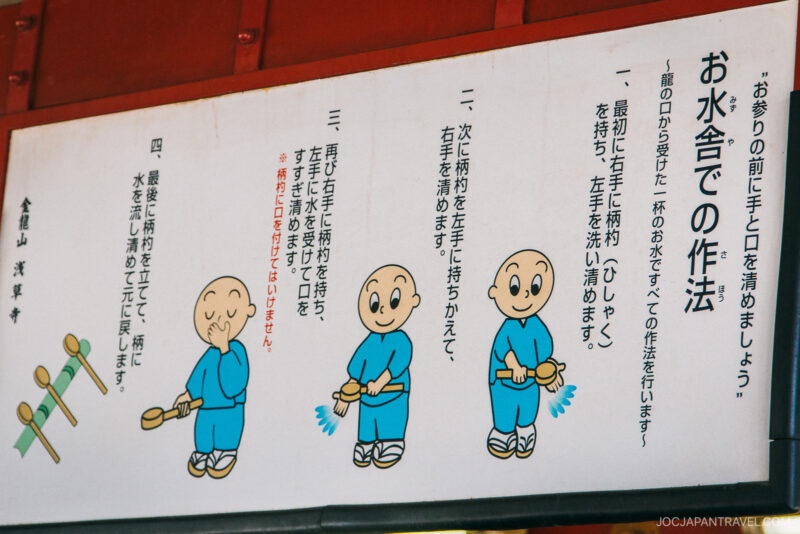
Before entering the main hall, stop by the temizuya (water pavilion), where you’ll find a stone basin and wooden ladles.
Here’s the simple way to do the cleansing ritual:
- Scoop water with the ladle using your right hand and rinse your left.
- Switch hands and rinse your right.
- Pour a little water into your left hand, rinse your mouth, and spit beside the basin (not into it).
- Let the leftover water run down the ladle handle to clean it, then place it back.
Kids might get a bit distracted by all the splashing, but it’s a wonderful opportunity to share the meaning behind this centuries-old tradition.
Exploring the Temple Grounds
There’s more to Sensoji than just the main hall. These are the areas we enjoyed the most.
Main Hall – Kannondo (観音堂)
This is the heart of the temple, where worshippers pray to Kannon. Even though the original statue is hidden, many people come here to offer coins, clap their hands in prayer, and make wishes.
Omikuji – Try Your Luck!
Near the main hall, you’ll find a set of wooden boxes and small drawers labeled with numbers. This is where you can draw an omikuji—a fortune slip.
Here’s how it works:
- Shake the hexagonal metal box until a stick comes out.
- Match the number on the stick to a drawer.
- Take your paper fortune from that drawer.
If you get a daikichi (great blessing), keep it! If it’s a kyō (bad luck), tie it onto the nearby rack to leave the misfortune behind. Our kids had fun comparing their fortunes.
Five-Story Pagoda & Asakusa Shrine
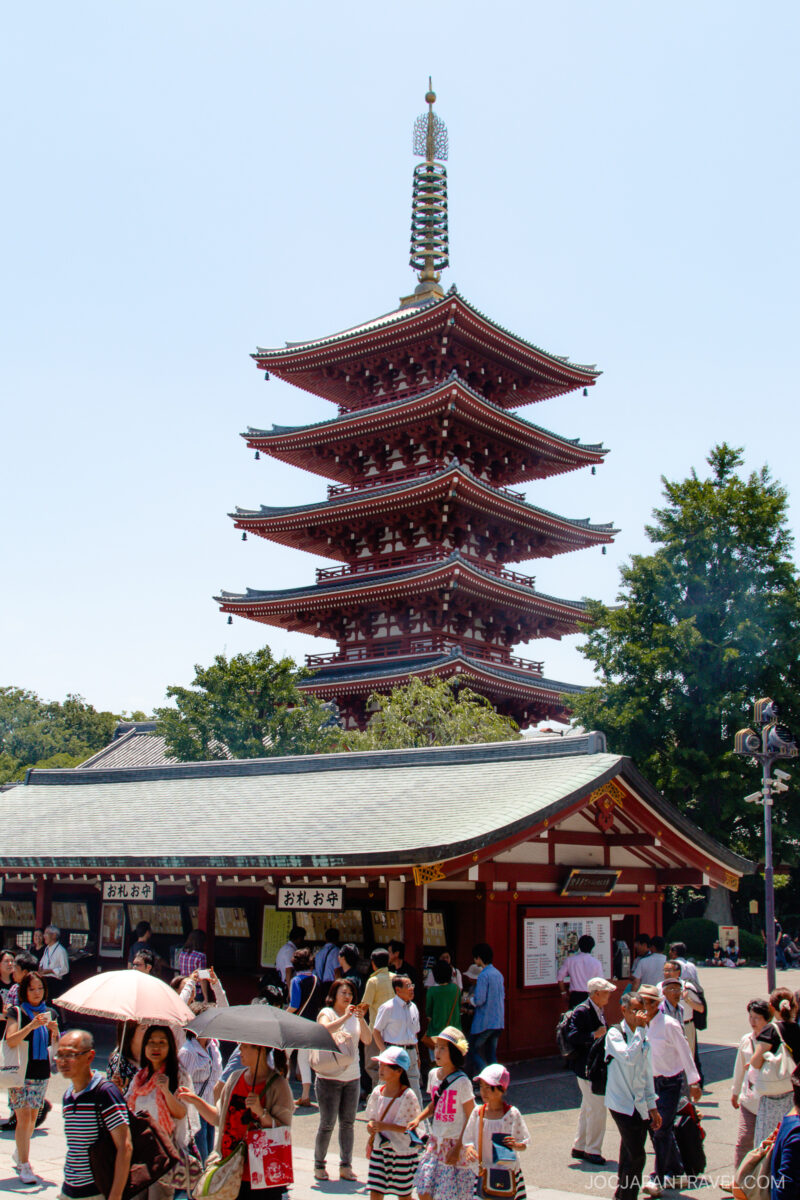
Behind the main hall is the towering five-story pagoda. It’s usually not open to the public, but it’s one of the tallest pagodas in Japan and beautiful to photograph.
Just steps away is Asakusa Shrine, a peaceful Shinto shrine honoring the fisherman brothers and village chief from the original legend.
How to Get There
Train:
• Take the Tokyo Metro Ginza Line, Toei Asakusa Line, or Tobu Skytree Line to Asakusa Station
• From the station, it’s about a 5-minute walk to the temple entrance
Is Sensoji Temple Worth Visiting?
Our family loves visiting Sensoji Temple. The kids enjoy the praying rituals and omikuji, while we appreciate the atmosphere and cultural depth.
From the legend of the Kannon statue to the energy of the Nakamise shopping street, a visit to Sensoji is a rich, immersive experience for the whole family.
It’s true that the temple has become one of Tokyo’s most popular attractions and can get very crowded, especially during peak hours—but it’s still absolutely worth visiting for its cultural significance and vibrant atmosphere.
More to Explore Nearby
After exploring Sensoji’s temple grounds, incense rituals, and omikuji fortunes, consider visiting these nearby highlights:
- Nakamise Shopping Street (仲見世通り) – A lively shopping street leading to the temple, filled with traditional snacks and souvenirs.
- Asakusa Culture and Tourist Information Center – Located just across from the Kaminari-mon gate, it offers free city views and helpful visitor resources.
- Sumida Park (隅田公園) – A peaceful riverside escape that’s especially scenic during cherry blossom season.
- Tokyo Skytree (東京スカイツリー) – Walk or ride a few minutes to this iconic tower for city views, shopping, and family-friendly fun.


